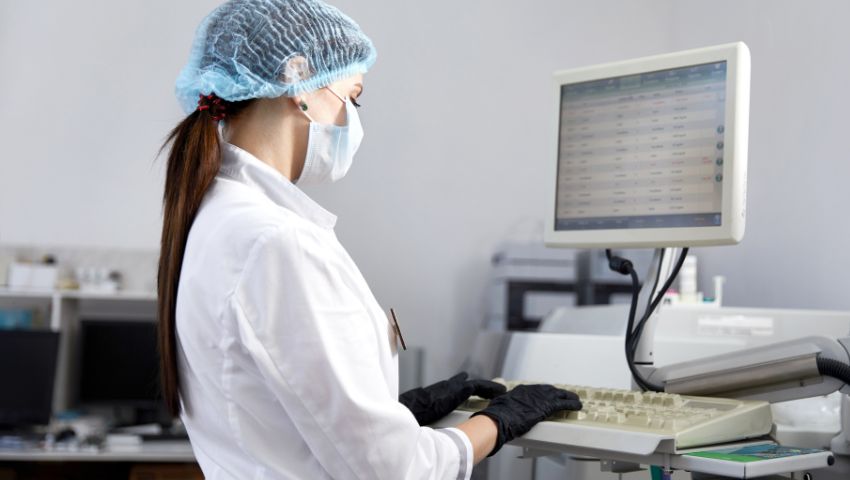How to Use Lab KPIs to Improve Accuracy and Turnaround Time

Table of Contents
Introdcution
What Are Lab KPIs?
Key KPIs for Accuracy and Turnaround Time
Using KPIs to Identify and Solve Problems
Best Practices for Implementing KPI Monitoring
Benefits of KPI-Driven Lab Management
FAQs
Conclusion
Introduction
In modern clinical laboratories, improving accuracy and turnaround time (TAT) is critical for delivering timely and reliable patient results. To achieve this, lab managers increasingly rely on Key Performance Indicators (KPIs) — measurable values that indicate how effectively lab processes are functioning. By tracking and optimizing KPIs, laboratories can identify bottlenecks, reduce errors and enhance overall efficiency.
This article explores how lab KPIs can be used strategically to improve accuracy and turnaround time, driving better patient care and operational excellence.
What Are Lab KPIs?
Lab KPIs are specific, quantifiable metrics that assess the performance of laboratory operations. They provide insight into areas such as sample processing speed, error rates, equipment utilization and staff productivity. Common lab KPIs focus on:
- Accuracy: Reflects the precision and correctness of lab test results.
- Turnaround Time (TAT): The total time from sample receipt to result reporting.
- Sample Rejection Rate: Percentage of samples rejected due to pre-analytical errors.
- Equipment Downtime: Duration equipment is non-operational, affecting test processing.
By measuring these parameters continuously, labs gain data-driven visibility into their workflow performance.
Key KPIs for Accuracy and Turnaround Time
Focusing on these KPIs helps labs directly impact quality and speed:
1. Turnaround Time (TAT)
- Measures the elapsed time from sample collection to result delivery.
- Shorter TAT improves patient satisfaction and clinical decision-making.
2. Analytical Accuracy
- Percentage of tests performed without error or requiring repeat analysis.
- High accuracy reduces false positives/negatives, improving treatment plans.
3. Sample Rejection Rate
- Reflects the proportion of samples rejected before testing due to issues like improper labeling or contamination.
- Lowering rejection rates decreases delays and workload duplication.
4. Equipment Utilization Rate
- Tracks how effectively instruments are used relative to capacity.
- Ensures optimal scheduling and prevents equipment overuse or underuse.
5. Error Rate
- Includes pre-analytical, analytical and post-analytical errors.
- Reducing errors enhances reliability and compliance.
Using KPIs to Identify and Solve Problems
Tracking KPIs is only useful if labs interpret the data and act on insights. Here’s how:
Analyze Trends and Outliers
- Monitor KPI trends over time to detect worsening TAT or rising error rates.
- Identify outliers such as days with unusually long delays or high rejections.
Root Cause Analysis
- Use KPI data to pinpoint bottlenecks — e.g., slow sample registration or instrument calibration issues.
- Investigate causes like staff shortages, equipment failures or procedural lapses.
Implement Targeted Improvements
- Streamline workflows by automating sample tracking and reporting.
- Enhance staff training to reduce errors in specimen handling.
- Schedule preventive maintenance to minimize equipment downtime.
Set Realistic Benchmarks
- Establish performance targets based on industry standards and past data.
- Regularly review and adjust goals to foster continuous improvement.
Best Practices for Implementing KPI Monitoring
To leverage KPIs effectively, labs should follow these best practices:
- Automate Data Collection: Use Laboratory Information Management Systems (LIMS) for real-time, accurate KPI tracking.
- Ensure Data Accuracy: Validate data input to avoid skewed metrics and misleading conclusions.
- Engage Staff: Share KPI results with the entire team to promote accountability and collaborative problem-solving.
- Review KPIs Regularly: Conduct weekly or monthly KPI review meetings to evaluate progress and adjust strategies.
- Integrate with Quality Management: Link KPIs to overall quality assurance programs for comprehensive oversight.
Benefits of KPI-Driven Lab Management
Implementing KPI monitoring delivers multiple benefits:
- Improved Patient Outcomes: Faster, accurate test results enable timely clinical decisions.
- Operational Efficiency: Identifies waste and inefficiencies, reducing costs.
- Regulatory Compliance: Supports documentation and audit readiness.
- Staff Engagement: Encourages a culture of continuous improvement and quality awareness.
- Data-Driven Decisions: Enables objective prioritization of resources and investments.
FAQs
Q1: How often should lab KPIs be reviewed?
KPIs should be reviewed at least monthly, with critical KPIs monitored weekly or daily for timely interventions.
Q2: What software can help track lab KPIs?
Laboratory Information Management Systems (LIMS) and specialized dashboard tools can automate KPI tracking.
Q3: Can KPIs help reduce sample rejection rates?
Yes, by identifying causes like labeling errors or improper sample collection, labs can implement corrective actions.
Q4: Is it possible to improve turnaround time without increasing staff?
Automation, workflow optimization and equipment maintenance can improve TAT without additional hires.
Conclusion
Using lab KPIs to monitor and improve accuracy and turnaround time is essential for modern laboratories aiming to deliver high-quality results swiftly. By selecting the right KPIs, analyzing data systematically and implementing targeted process improvements, labs can enhance efficiency, reduce errors and ultimately provide better patient care.
At LifeLinkr fertility clinic software, we empower labs with advanced KPI tracking tools and insights to help transform laboratory operations. Embracing KPI-driven management is a crucial step towards operational excellence in today’s fast-paced healthcare environment.

